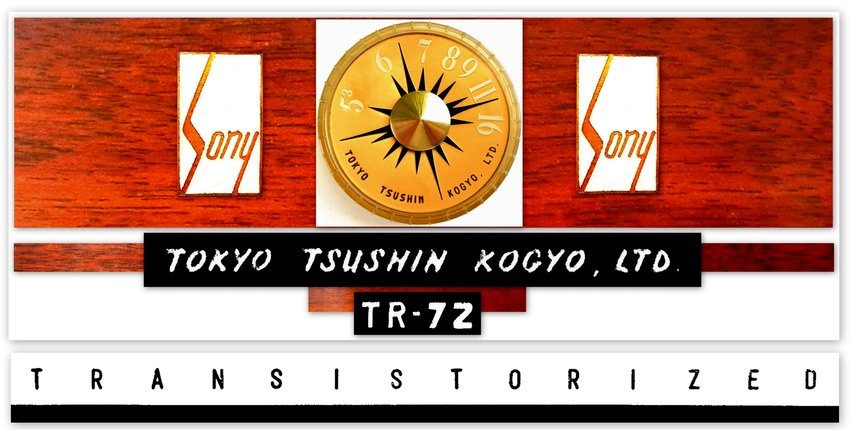
The chassis of this hand built TR-72 has all the hallmarks of an early model as evidenced by the low serial number and other unique identifiers. On his fine website ‘RadioWallah’ collector Alan Kastner states «Sony implemented loads of design changes as production went on, and the early units differ quite a bit from the later ones.»
I interrupted Alan’s recent interlude in Toronto and he graciously answered some of my questions regarding the TR-72. I’ve edited his answers slightly.
What are the earliest and latest serial numbers that you know of?
There are a couple of super-early numbers I’ve got in photos with me. Both of these units belong to friends in Japan, S/N 961 (Yep. A three-digit number!!) and S/N 1333. I’m less certain about later serial numbers, but I’m pretty sure I’ve seen a few later than Michael’s (collector Michael Jack has an example with a serial number of 53314). If memory serves me correctly, they extend up towards 58,000 or 59,000.
If serial numbers go upwards of 58000 then wouldn’t that tend to indicate that Sony manufactured more than the 40000 thought to have been made?
It’s hard to speculate about the total production number. There could have been gaps in the numbers as they went, but I wouldn’t be surprised if domestic production went beyond the figure of 40,000. It was a highly popular model and was in production for over four years in Japan, (plus a few years elsewhere at the end.)
Do you know if they were ever made with the new Sony logo on the front?
Not to my knowledge, no. Of course, the brass strip along the bottom of the back panel did change from Totsuko (Tokyo Tsushin Kogyo Ltd ) to Sony Corp when the company changed its name at the beginning of 1958. The front panel that read TRANSISTORIZED on earlier units also changed to SEVEN TRANSISTOR later on.
Alan continues and points out more identifying features prominent on earlier models?
Digressing, the early units went through many rapid changes. For example, the first few thousand (going by serial numbers) have the following (unique identifiers);
1) A white vinyl strip in the battery holder that is colored with red and blue print.
2) A white vinyl earphone holder.
3) Blue print marking the antenna and earphone jacks. (The battery holder strip and earphone holder were later changed to the more familiar thin cardboard version with orange printing on it)
4) Two ferrite bar antennas inside, which were held down by metal clips.
5) The first few thousand also had brass carry handles, while all later units had anodized aluminum handles. I could go on and on forever with these and other details?.
Alan finishes by emphasising the following.
The entire circuit board was changed a little prior to reaching serial number 30,000. That was at a time when transistor [device] production had stabilized, true mass production had been achieved, sales were way up, and newer, better versions of the transistors and other components used were released. While less interesting to collectors of the earliest «hand-built» sets, the newer circuit board meant improved performance as well as a major price reduction to the consumer.
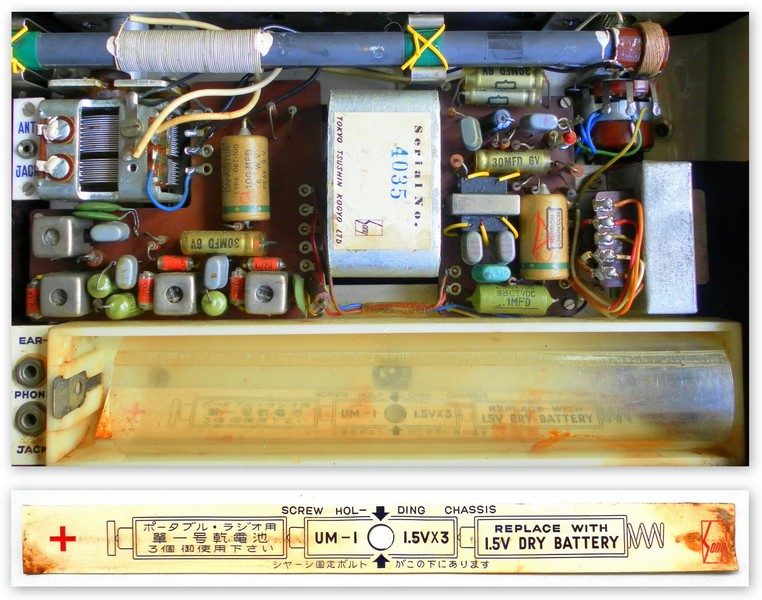
Schematic diagram of an early TR-72
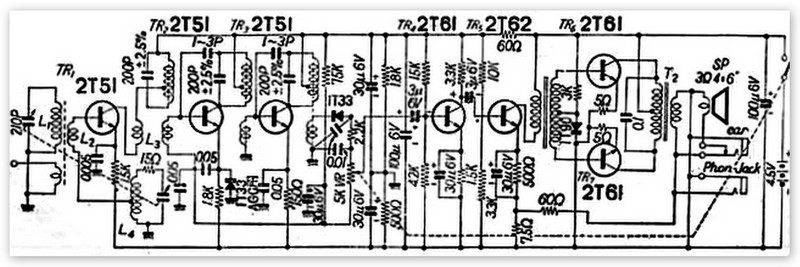
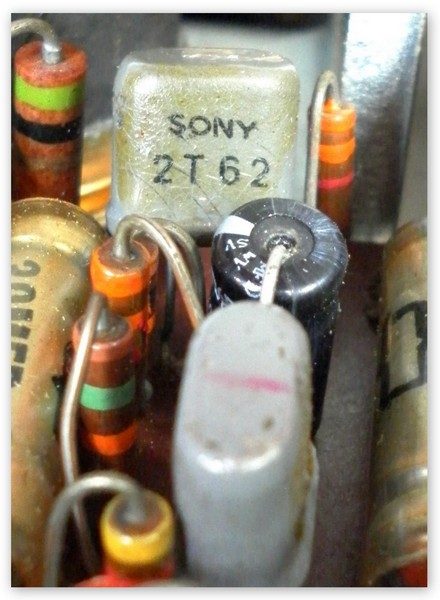
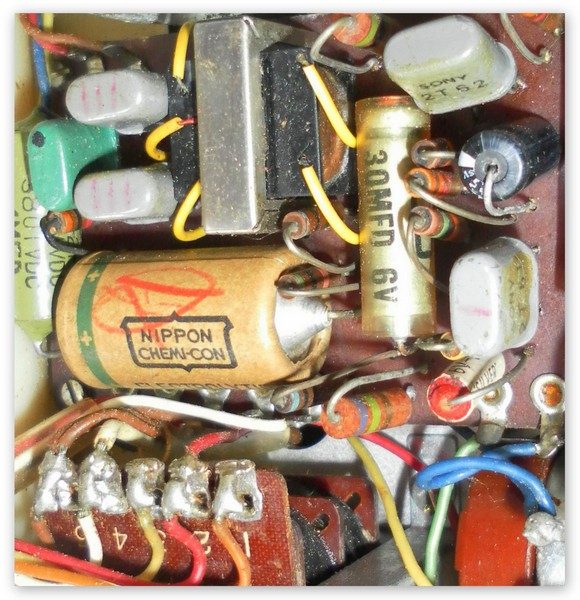
Ref 1a: Sony Global History/Masaru Ibuka / Ref 1b: Made in Japan — Akio Morita & SONY